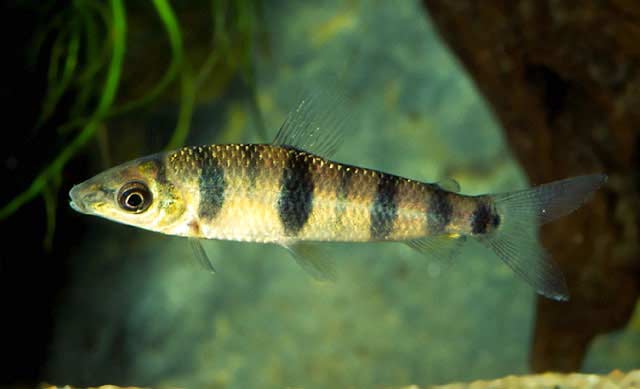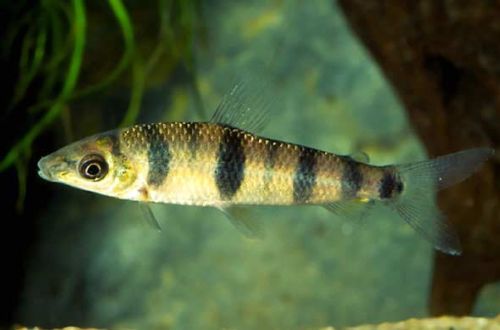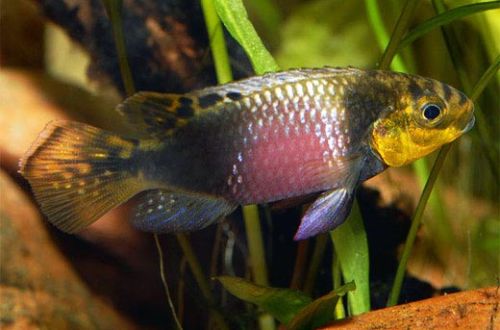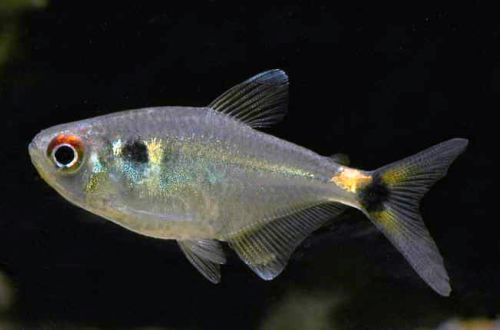
Leporinus Pellegrina
Leporinus Pellegrina, scientific name Leporinus pellegrinii, belongs to the family Anostomidae (Anostomidae). Comes from South America. It is found throughout the vast Amazon basin. Such a wide distribution is due to annual seasonal migrations.
Contents
Leporinus Pellegrina
 Leporinus Pellegrina, scientific name Leporinus pellegrinii, belongs to the family Anostomidae (Anostomidae)
Leporinus Pellegrina, scientific name Leporinus pellegrinii, belongs to the family Anostomidae (Anostomidae)

Description
Adults reach a length of about 12 cm. The wide habitat has led to the emergence of various groups within the same species, slightly different in color and body pattern. The most famous are golden-colored forms with a black ornament of large oval spots and strokes. Juveniles look somewhat different – dark stripes dominate in the pattern. Sexual dimorphism is weakly expressed. Males and females have few differences.
Behavior and Compatibility
In nature, they live in large groups. In the aquarium, it is also recommended to maintain a flock of at least 8-10 individuals. In small numbers and in confined spaces, Leporinus Pellegrina begins to show hostility towards relatives and other aquarium neighbors. For this reason, it is desirable to keep only one or a couple of these fish in a small tank.
Compatible with species of comparable size from the characin, peaceful American cichlid, Bronyak or Loricari catfish.
Brief information:
- The volume of the aquarium – from 300 liters.
- Temperature – 23-27°C
- Value pH — 5.8–7.5
- Water hardness – 3–15 dH
- Substrate type – any
- Lighting – subdued, moderate
- Brackish water – no
- Water movement – moderate
- The size of the fish is about 12 cm.
- Nutrition – plant-based feed
- Temperament – conditionally peaceful
- Keeping alone, in pairs or in a large group
Maintenance and care, arrangement of the aquarium
Given the characteristics of behavior, the size of the aquarium is selected based on the number of Leporins. For a group of a dozen fish, a tank of 300 liters or more will be required. The design must combine open areas for swimming and places for shelters from snags and thickets of plants. The choice of the latter should be treated with great attention. This type of fish is herbivorous, so it is necessary to select varieties with hard leaves.
You can choose suitable plants in the appropriate section on our website using the filter by checking the box “Able to grow among herbivorous fish.”
Unpretentious to living conditions. Although this species is able to adapt to a wide range of hydrochemical parameters. However, it prefers soft, slightly acidic water.
Food
The basis of the diet should be feed rich in herbal supplements. Accordingly, high-protein foods are not recommended. On occasion, it will damage ornamental aquatic plants.





